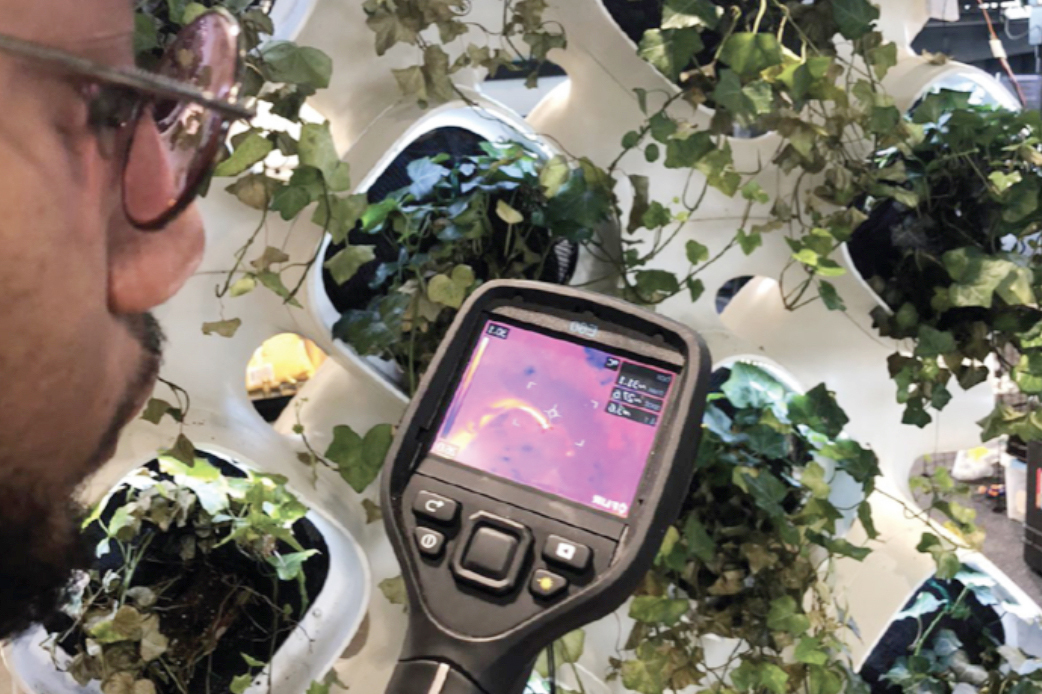A look inside the Yale Center for Ecosystems and Architecture
A collaboration between six Yale schools, the Yale CEA seeks to develop new systems for sustainable design and ecology.

Courtesy of Yale Center for Ecosystems and Architecture
Since its founding in 2019, the Yale Center for Ecosystems and Architecture has been on the search for new solutions in the fields of sustainable design and ecology.
The Yale CEA is an academic collaboration between the Yale Schools of Architecture, Environment, Medicine, Engineering and Applied Sciences, Nursing and Public Health. The center’s main objectives are to research, develop and test novel building-integrated systems for on-site energy generation, air cleaning, water purification and food growing.
“A major goal of CEA is to develop new systems to reach net zero,” founding director Anna Dyson told the News. “We want to build environmental systems that are not going to stress the planet’s ecosystems.”
According to Dyson, the CEA is a “consortium that unites researchers in the R&D of novel building research,” bringing together the resources of multiple departments on campus.
This collaboration extends beyond Yale, Dyson said, connecting with institutions from across the nation and globe — including New York University, Weill Cornell Medical School, City College of New York, the University of Arizona, Rice University, the University of Guatemala, the Pontifical University of Peru, McGill University and Ghana National Labs.
Much of the center’s research is funded by the Environmental Protection Agency, the National Science Foundation, the United Nations Environment Program and industrial sponsors such as Holcim Lafarge, Skidmore Owings and Merrill LLP. These funds go towards developing system prototypes and testbeds, which are demonstrated at building and exhibition sites such as their upcoming COP28 demonstration in Dubai. These initiatives showcase the potential of sustainable design.
Yale CEA also seeks to innovate methods for on-site energy generation, urban agriculture and air and water collection and purification through food-producing plant-based means, which they believe will move society closer to a sustainable built environment.
Although the center is relatively new to Yale, the CEA already has engaged students from multiple schools, including the School of Architecture, the School of Engineering and Applied Sciences, the School of Public Health and the Yale School of the Environment. These include students from all levels — undergraduate, masters and doctoral — working with the center on their projects.
Dyson shared that she loved working with students of all levels on projects. The center often takes groups of students internationally to build prototypes and test them in various places, such as Guatemala and Cape Town, South Africa.
“Albeit facing the many delays we all had during COVID, the interdisciplinary nature of our work allowed me to benefit from the extensive resources our research cohort has,” said Mandi Pretorius GRD ’24, a PhD student who works with the center.
She shared that the multiple stages of lab-to-building scale investigations took place across several locations and were spurred on by each collaborator’s insight and contributions.
Pretorius said that as a student, she continues to enjoy and value the work she gets to do at Yale CEA.Many members of the CEA work on various projects within the center to achieve different goals.
“I’ve been working on the data aspect,” said Mohamed Aly Etman, a lecturer at the Yale School of Architecture and research scientist for the CEA. “One of the projects we work on is building data visualization and interdisciplinary data sets.”
One project highlighted by Aly Etman was Socio-Ecological Visual Analytics. This work’s main objective, he said, is to try to answer the question, “how can we dramatically increase the number of stakeholders who can access data and can participate in the built environment process?” This is achieved through the use of visual analytics, which helps to make data and information more accessible and understandable to a wider range of individuals.
Overall, Aly Etman spoke highly of the center and emphasized the positive experience of working alongside individuals with a diverse set of skills, including engineers, architects and scientists. He also noted the center’s commitment to collaboration, making the CEA a hub for interdisciplinary work.
Mae-Ling Lokko, an assistant professor at the Yale School of Architecture and primary research faculty director for the CEA, also praised the center and highlighted Soil Sisters, a new research project underway at CEA that focuses on material life cycle design for soil health.
“CEA brings interdisciplinary research teams together to focus on the development of research at the intersection of ecosystems design, building integrated systems and integrated material life design,” Lokko wrote to the News.
According to the Soil Sisters website, one goal of the project is to revolutionize material supply chains by connecting agricultural by-products and soil health, with their ultimate goal being cross-sectoral environmental performance through new biomaterial construction systems. Namely, they intend to use materials from agriculture to make better building materials that also benefit the environment.
One example Dyson gave was the use of natural dyes that are nontoxic to the environment.
CEA is currently conducting prototyping and experiments in multiple spaces at the University, including the Yale Built Environment Measurements Lab, located on the 6th floor of Rudolph Hall, and the Yale Science Building. They also have been conducting several field experiments in 2022 and 2023 with their collaborating partners in New York City, Arizona, Guatemala and Cape Town, South Africa.
CEA is currently in the planning stages of renovating a space on Howe Street that will serve as their headquarters in New Haven.







